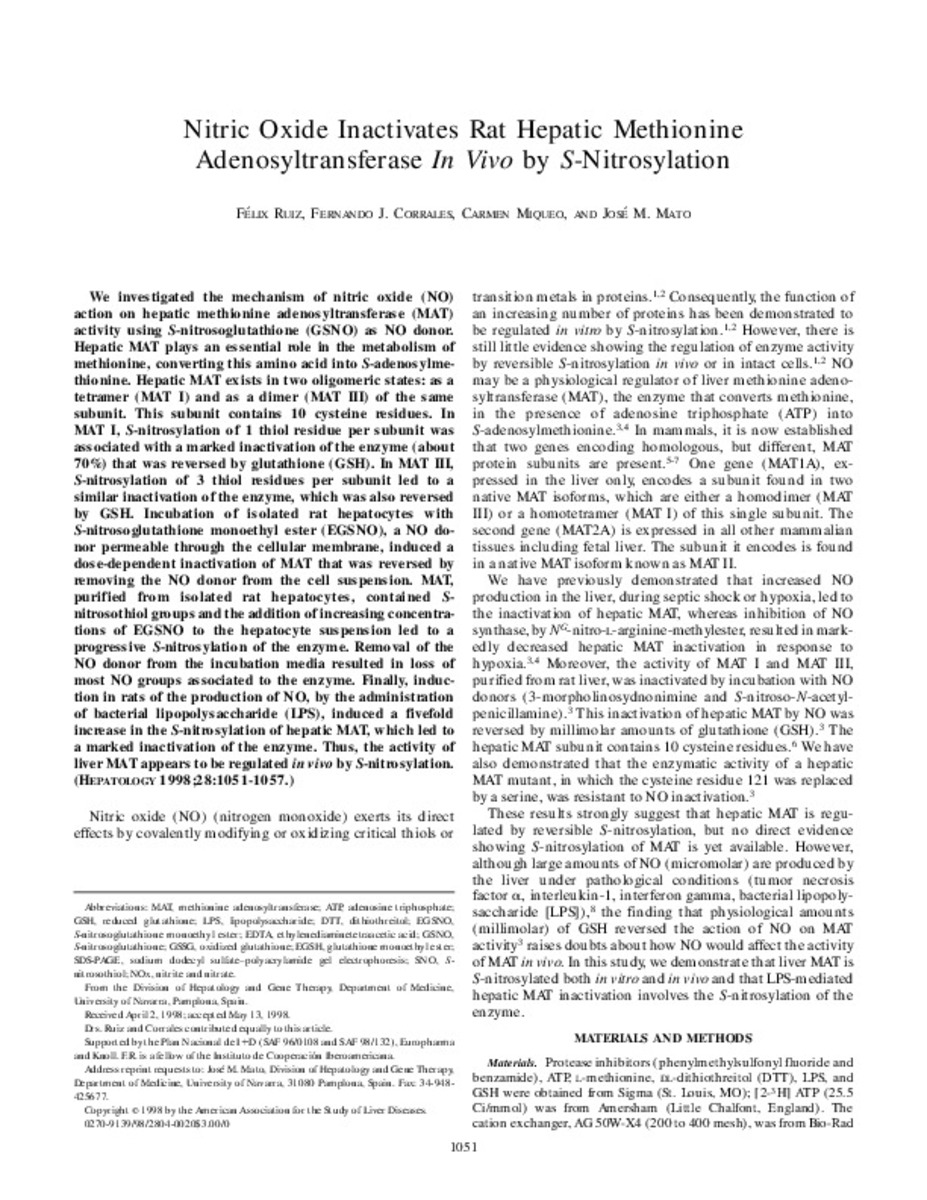Nitric oxide inactivates rat hepatic methionine adenosyltransferase In vivo by S-nitrosylation
Palabras clave :
Glutathione/analogs & derivatives
Liver/metabolism
Liver/metabolism
Methionine Adenosyltransferase/antagonists & inhibitors
Nitric Oxide Donors/pharmacology
Nitroso Compounds/pharmacology
Fecha de publicación :
1998
Editorial :
Wiley-Blackwell
Cita:
Ruiz F, Corrales FJ, Miqueo C, Mato JM. Nitric oxide inactivates rat hepatic methionine adenosyltransferase In vivo by S-nitrosylation. Hepatology 1998 Oct;28(4):1051-1057.
Aparece en las colecciones:
Estadísticas e impacto
0 citas en

0 citas en

Los ítems de Dadun están protegidos por copyright, con todos los derechos reservados, a menos que se indique lo contrario.







